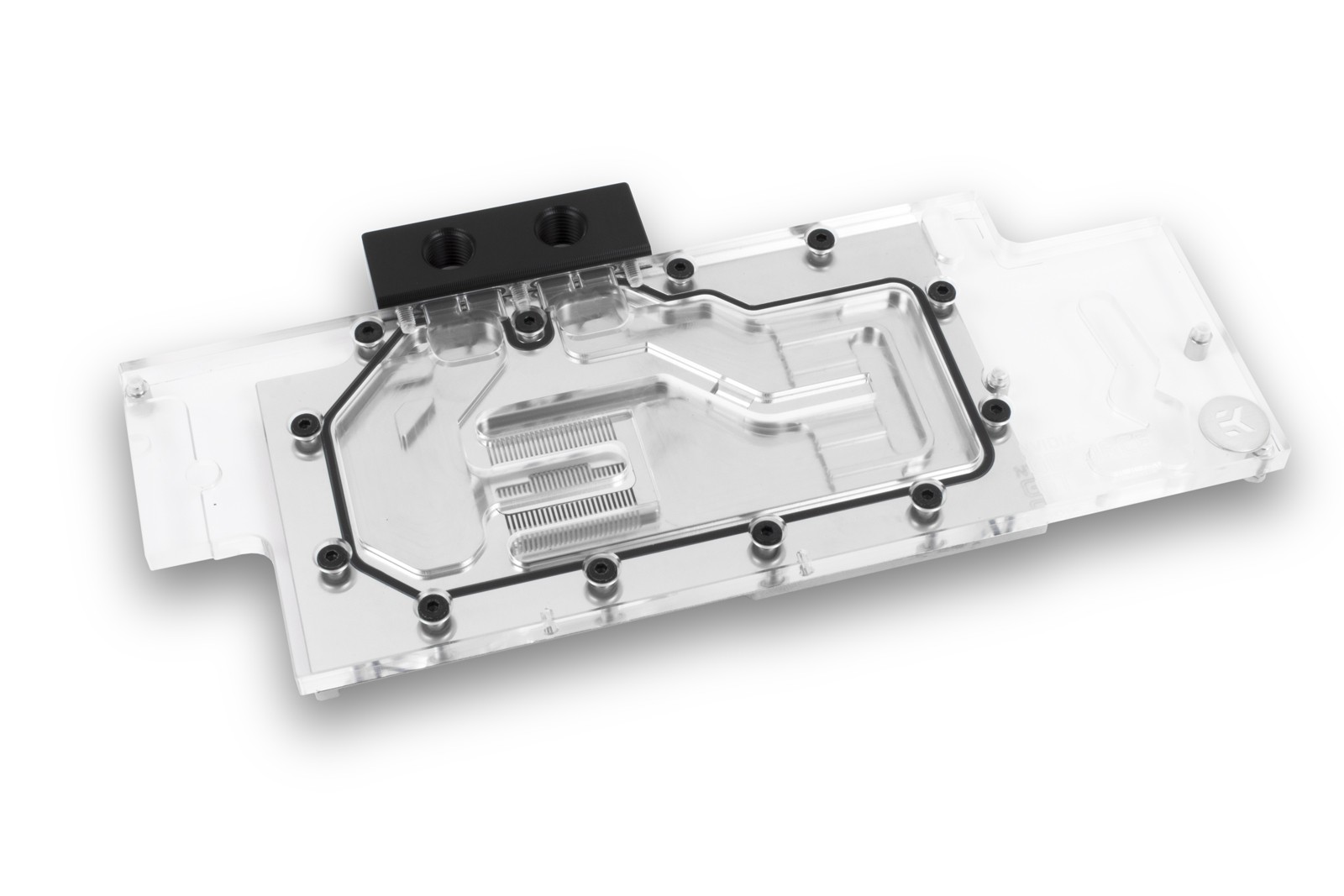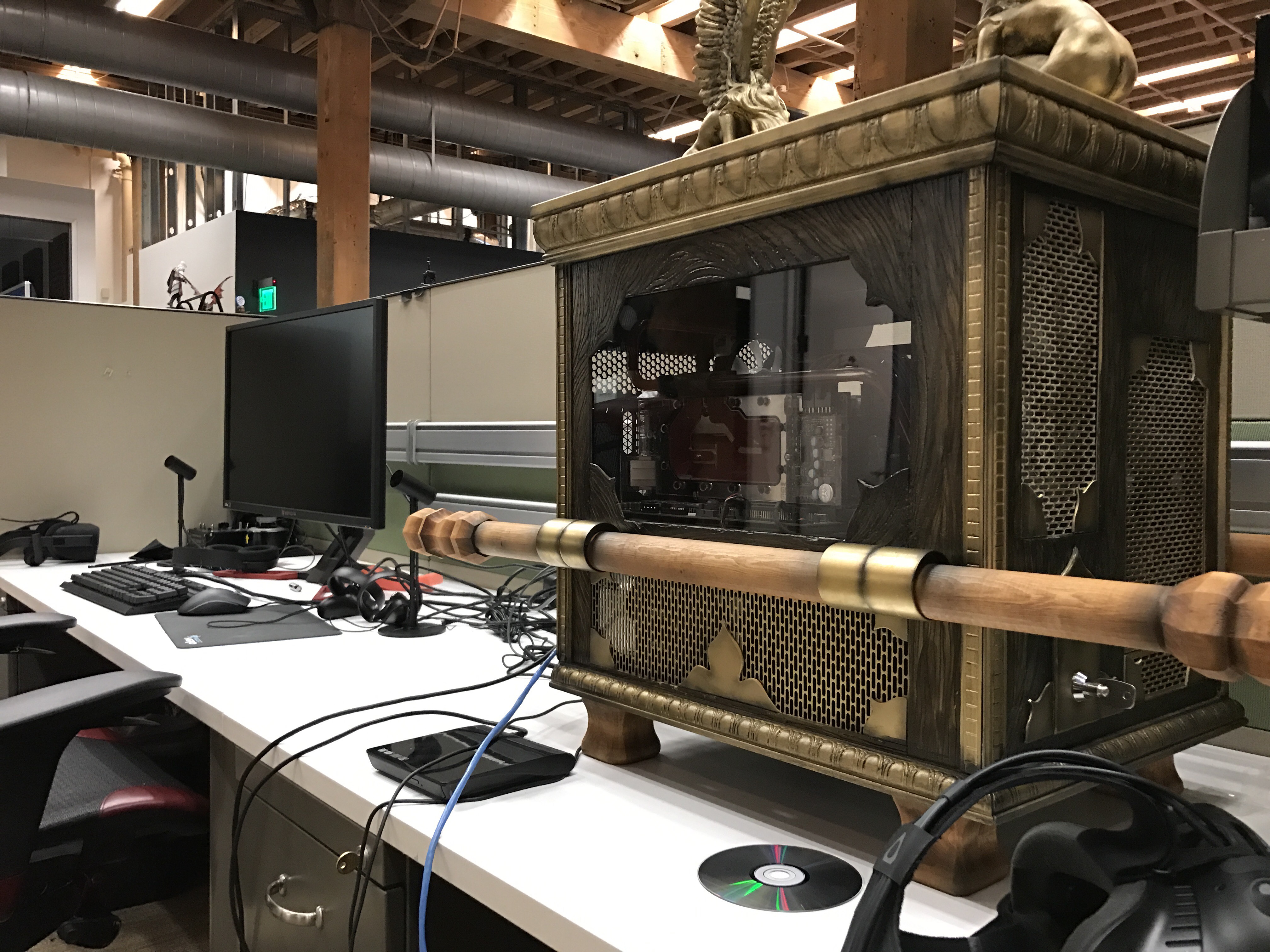What you need to know about GPU coolers
GeForce or Radeon, cooling designs matter.
Liquid-cooled
PC Gamer's got your back

When it comes right down to it, there’s only one way to get the best cooling performance for a graphics card, and that’s to have a custom liquid cooling loop. It’s the most advanced way to cool your GPU (and the rest of your system), but it’s not for everyone.
Let’s get one thing straight about liquid cooling: It’s expensive. It’s efficient and looks great, but it’ll cost you. First off, getting a liquid-cooled card is going to cost more than the stock card. We used two of Titan XPs in the LPC matted to two EKWB EK-FC Titan X Pascal water blocks. This pretty much represents the ultimate in GPU cooling. You can also get EKWB-pre-equipped cards in the form of EVGA’s Hydro Copper and MSI offers a liquid-cooled option with the Sea Hawk line too.
Going DIY can save you a little money, too. The EKWB waterblock for the GTX 1080 runs from $113 to $140, while the MSI GTX 1080 Sea Hawk goes for $800. Of course, if you’re thinking of installing the water block yourself, you have to be comfortable with removing the existing heatsinks, fans, and cowling, not to mention potentially voiding the warranty.

Speaking of going DIY, installing your own liquid cooling block is practically a drop in the bucket compared to the rest of the work you’ll have to do if you’re considering a liquid cooling loop. Even if you’re looking to just cool your GPU(s) with the loop, it still means you need to buy a reservoir, pump, radiator, fans, tubing, fittings, and cooling liquid. If you’re going this far, you might as well get a CPU block while you’re at it.
If you do go the liquid cooling route, your PC will likely be in a whole new class. People who build liquid cooling loops usually put a little extra effort into the styling of their PC. You’ll be able to achieve higher overclocks, lower temperatures, and improved desk appeal. But it will take work and time, so be prepared for a long day of measuring, cutting, and testing to make sure everything is just right.
Pros:
- By far the best thermal regulation of any solution
- Allows for highest overclocks
- Gives your build a more custom look
- Waterblocks often cover (and provide cooling to) VRM and other components, not just GPU
- Easier to use in SLI/CF than hybrid cards
- Water blocks are available for a variety of popular card models
Cons:
- Most expensive option, by far
- Requires other components of a liquid cooling loop
- Requires more time to install and test
- Requires the most expertise to install
Best used for:
- High-end rigs with custom liquid loops
There’s a lot of information to digest here, but the type of card you buy really boils down to your build’s requirements. I like to think that every build is a special snowflake, so considerations must be made for each one. Your GPU cooling solution will depend heavily on your case, how you choose to cool your other components, and your budget.
The biggest gaming news, reviews and hardware deals
Keep up to date with the most important stories and the best deals, as picked by the PC Gamer team.


